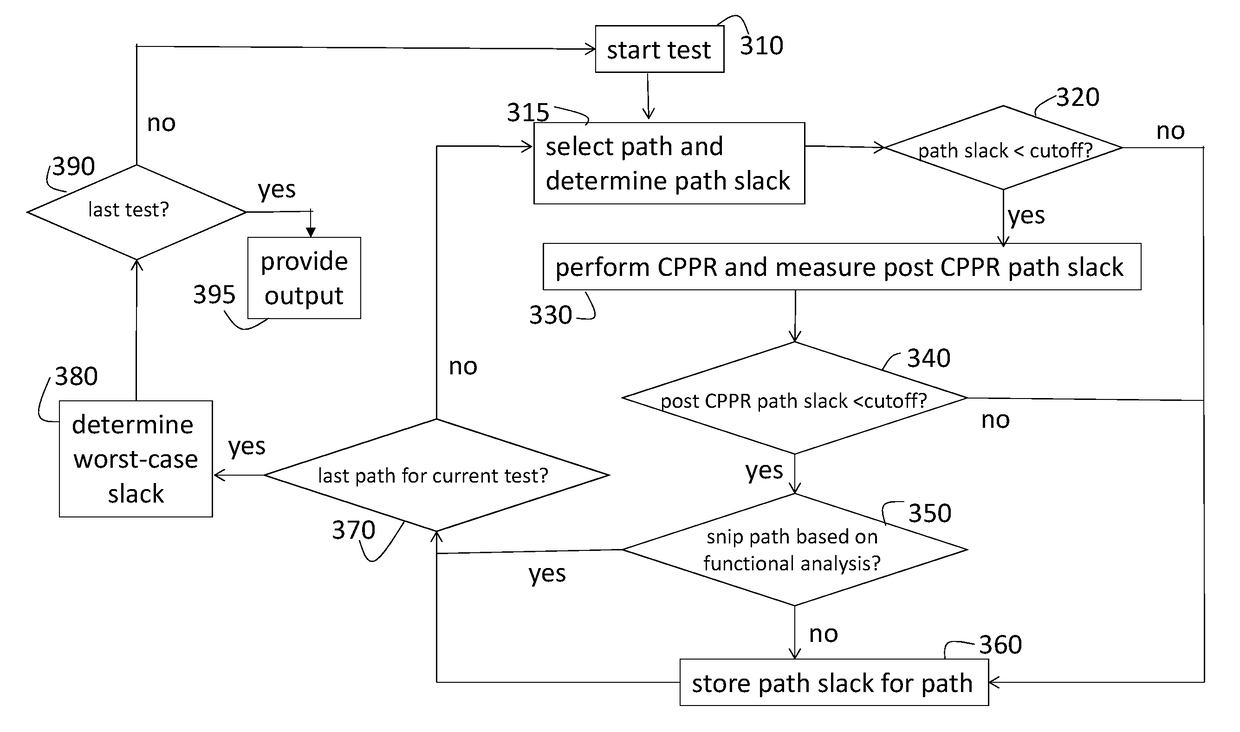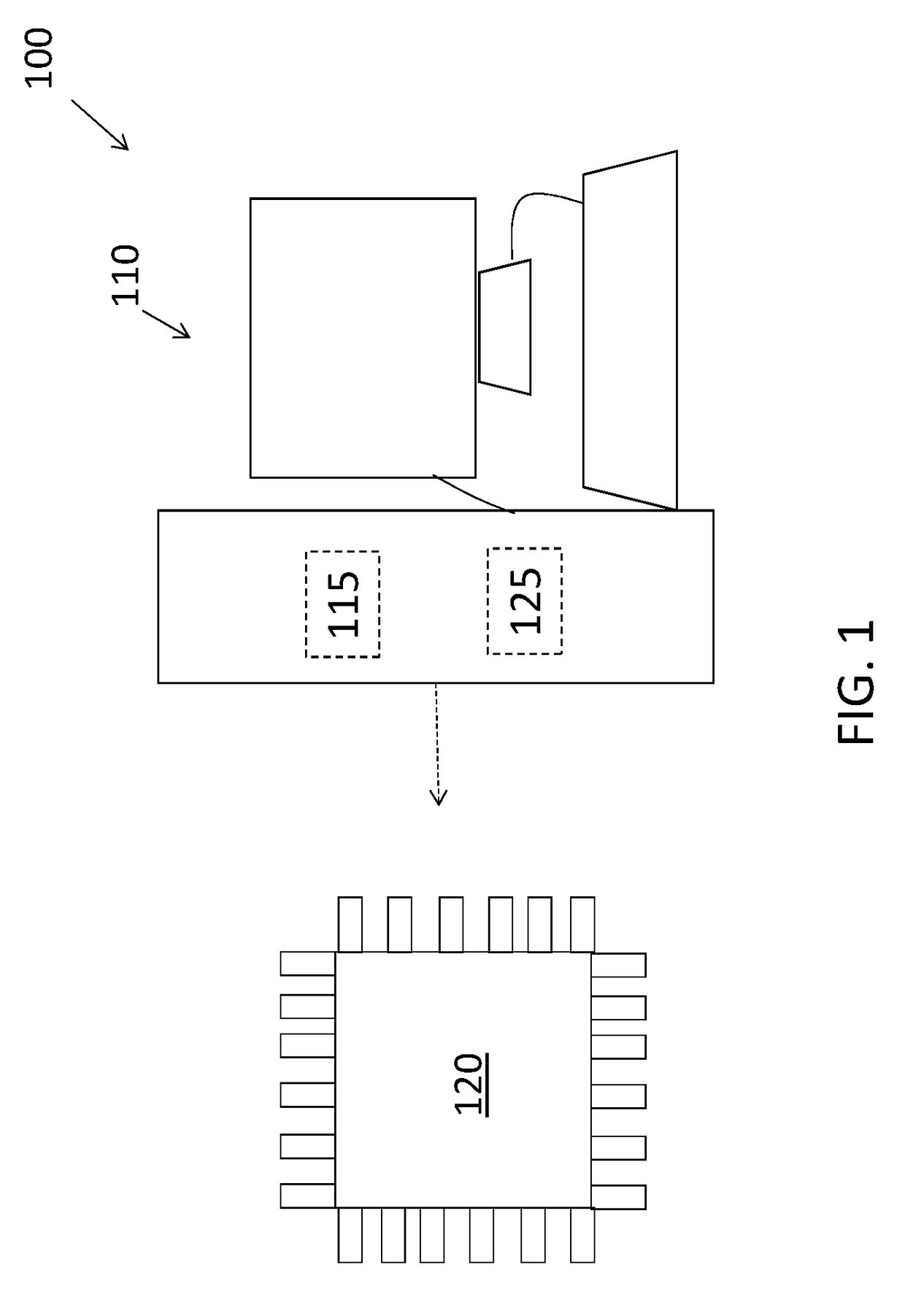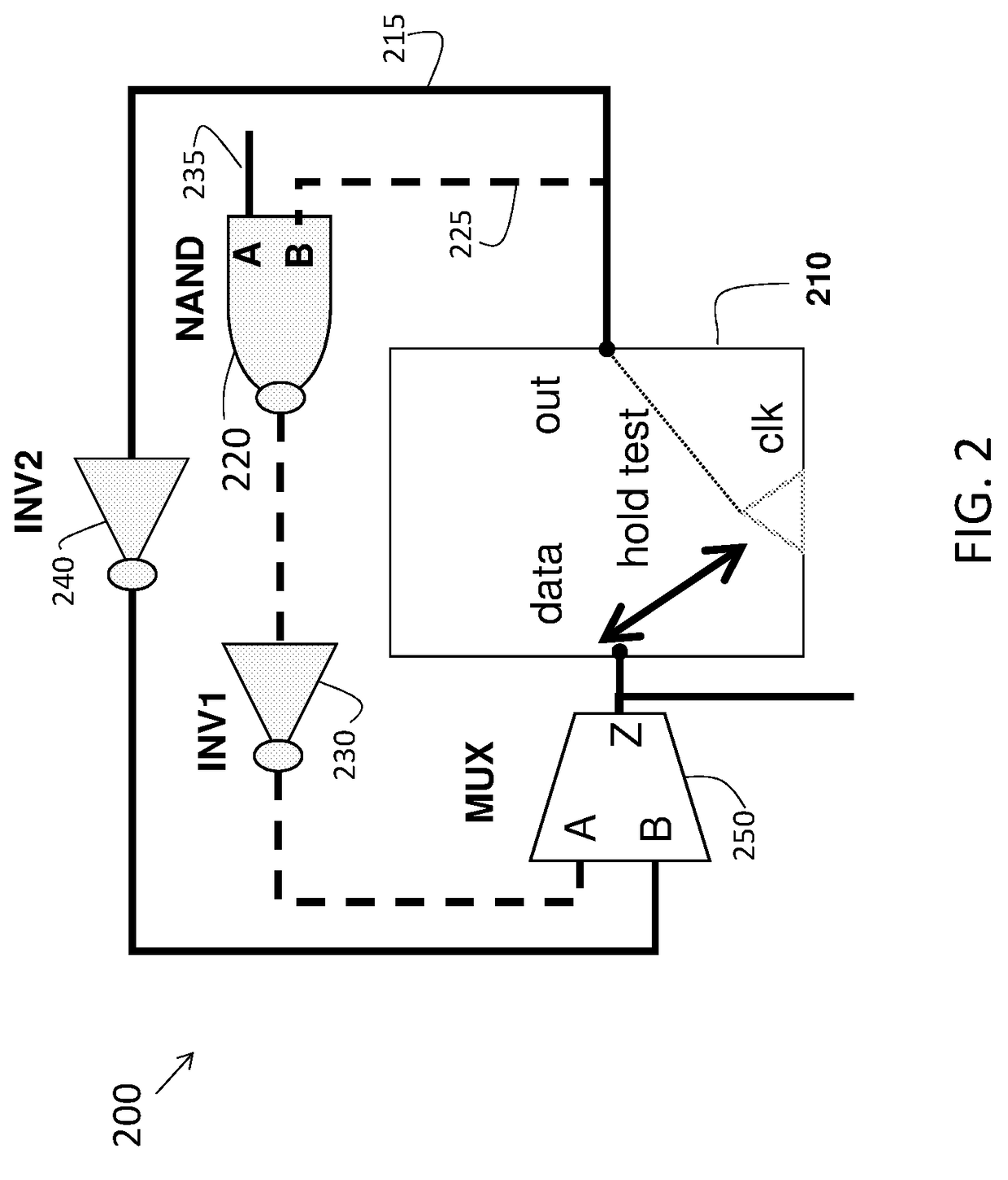Integration of functional analysis and common path pessimism removal in static timing analysis
a functional analysis and static timing analysis technology, applied in the field of static timing analysis, can solve the problems of unnecessarily pessimistic test outcome, unnecessary timing penalty, and pessimistic (cpp) source of pessimism or pessimism or cpp
- Summary
- Abstract
- Description
- Claims
- Application Information
AI Technical Summary
Benefits of technology
Problems solved by technology
Method used
Image
Examples
Embodiment Construction
[0012]The verification of timing and functionality of a chip design involves a number of different types of tests. As noted above, timing analysis tests may consider both early mode and late mode delay through the same edge, thereby giving rise to CPP. CPPR is a technique used to adjust timing slack (and, thus, the timing test result) to account for the CPP. Specifically, some positive timing slack is given to the path to account for the pessimism relating to assuming both an early mode and a late mode for the same path. Depending on the type of test being conducted, CPPR may be performed on a path-by-path basis. One example of such a test is a hold test. A hold test is a type of functional analysis that examines a race condition between an early mode data arrival time and a late mode clock arrival time at a flip-flop (latch). A negative slack indicates that the data may not remain stable for capture. However, if the hold test indicates a negative slack that is due to a non-invertin...
PUM
 Login to View More
Login to View More Abstract
Description
Claims
Application Information
 Login to View More
Login to View More - R&D
- Intellectual Property
- Life Sciences
- Materials
- Tech Scout
- Unparalleled Data Quality
- Higher Quality Content
- 60% Fewer Hallucinations
Browse by: Latest US Patents, China's latest patents, Technical Efficacy Thesaurus, Application Domain, Technology Topic, Popular Technical Reports.
© 2025 PatSnap. All rights reserved.Legal|Privacy policy|Modern Slavery Act Transparency Statement|Sitemap|About US| Contact US: help@patsnap.com



